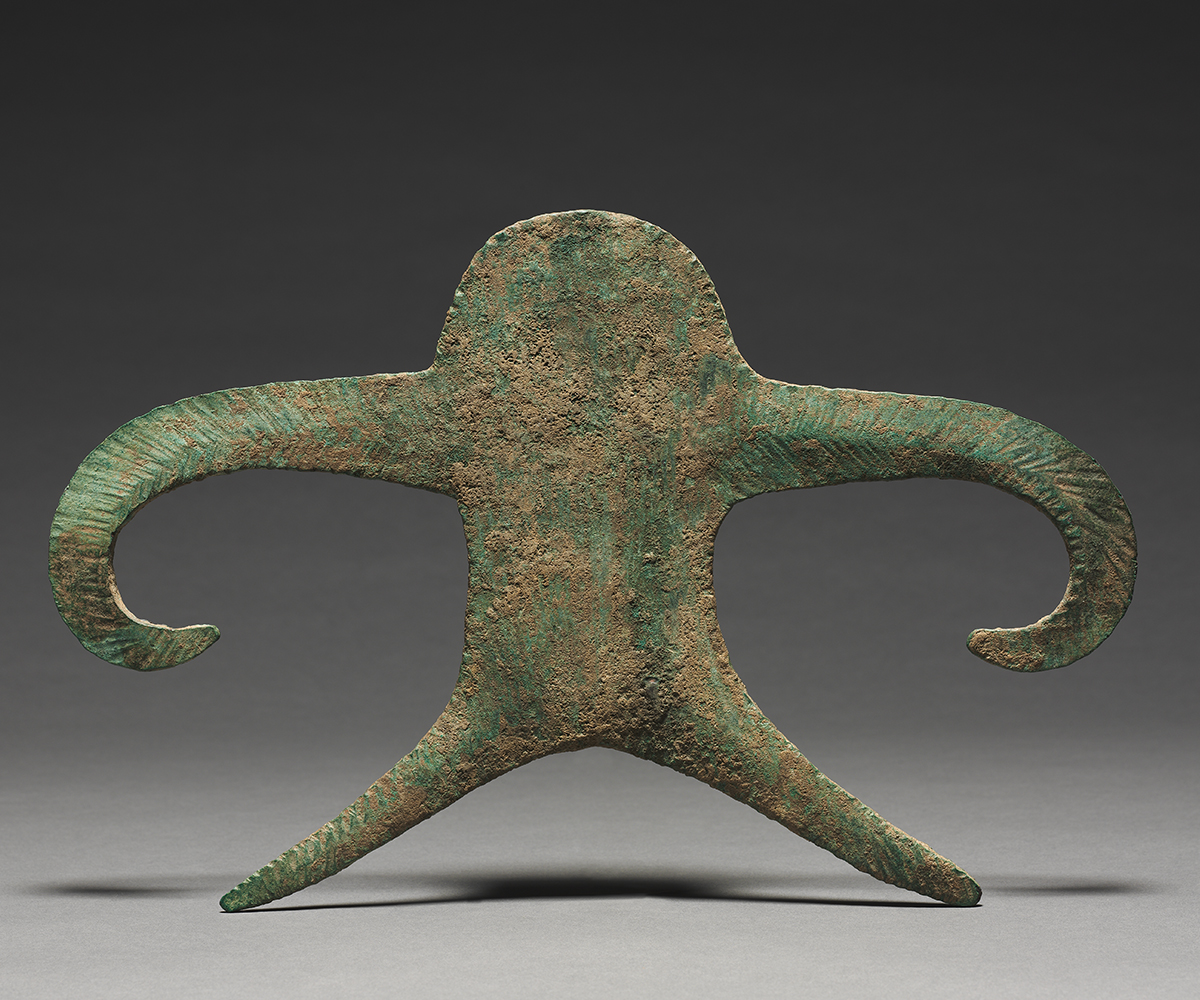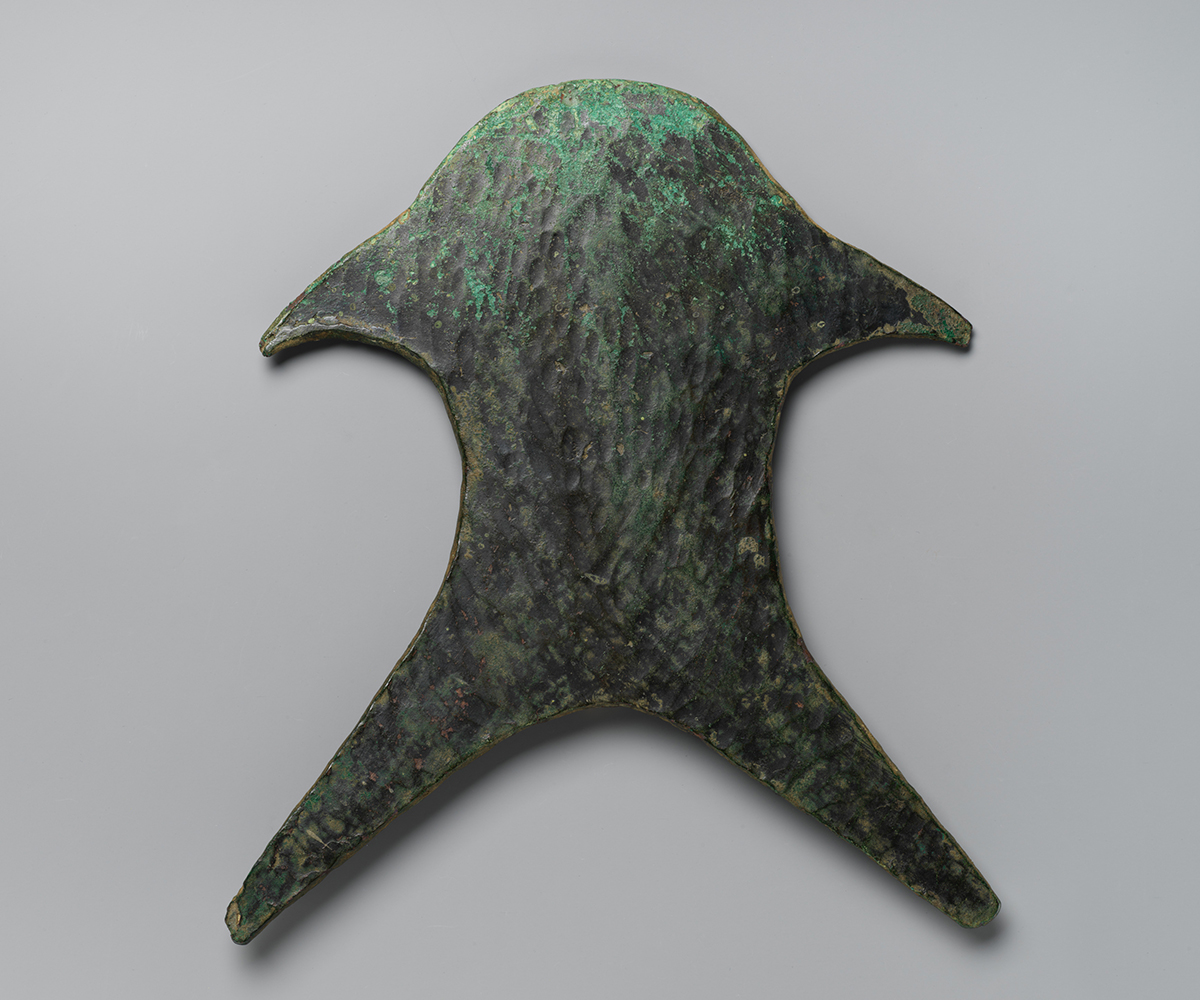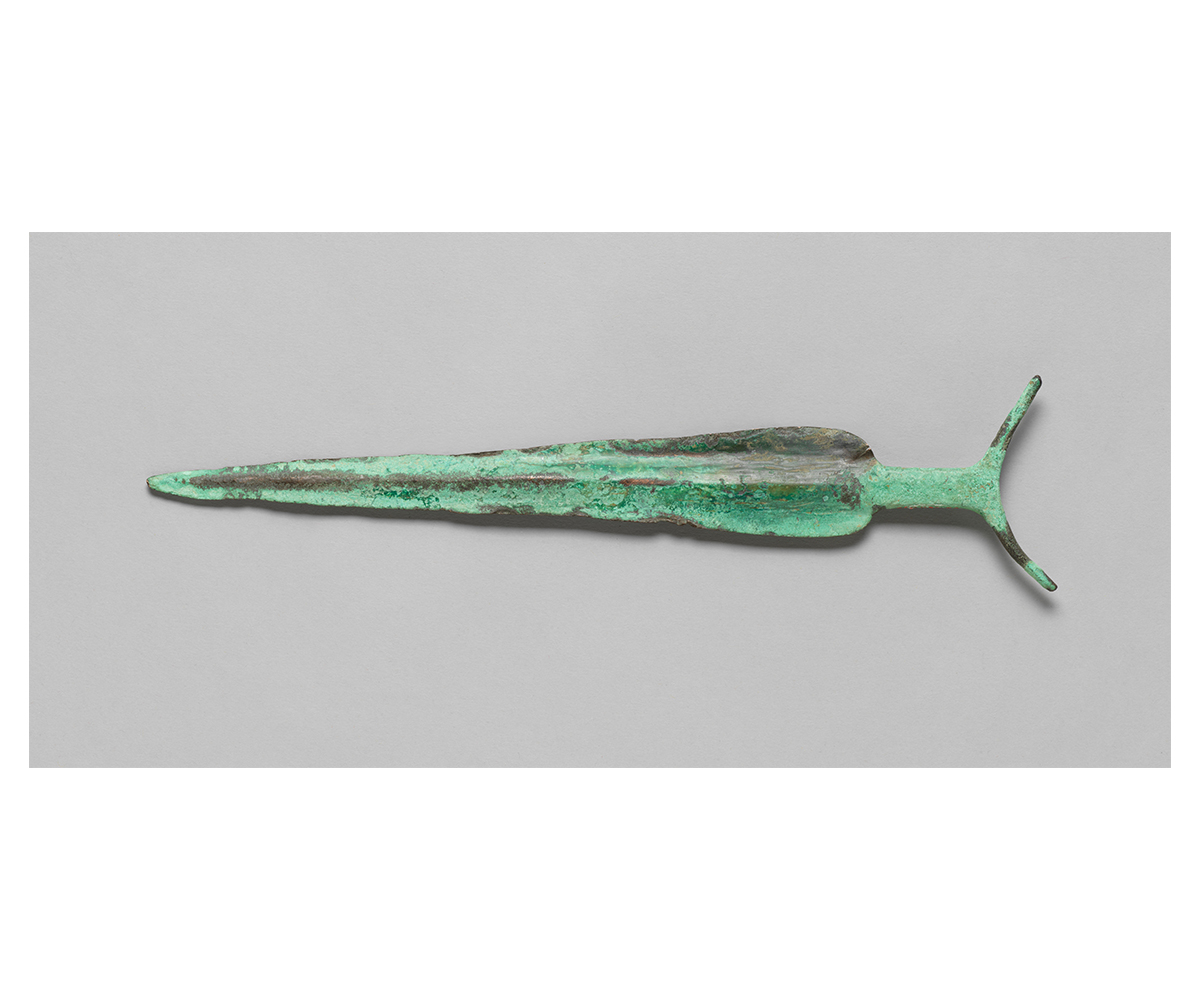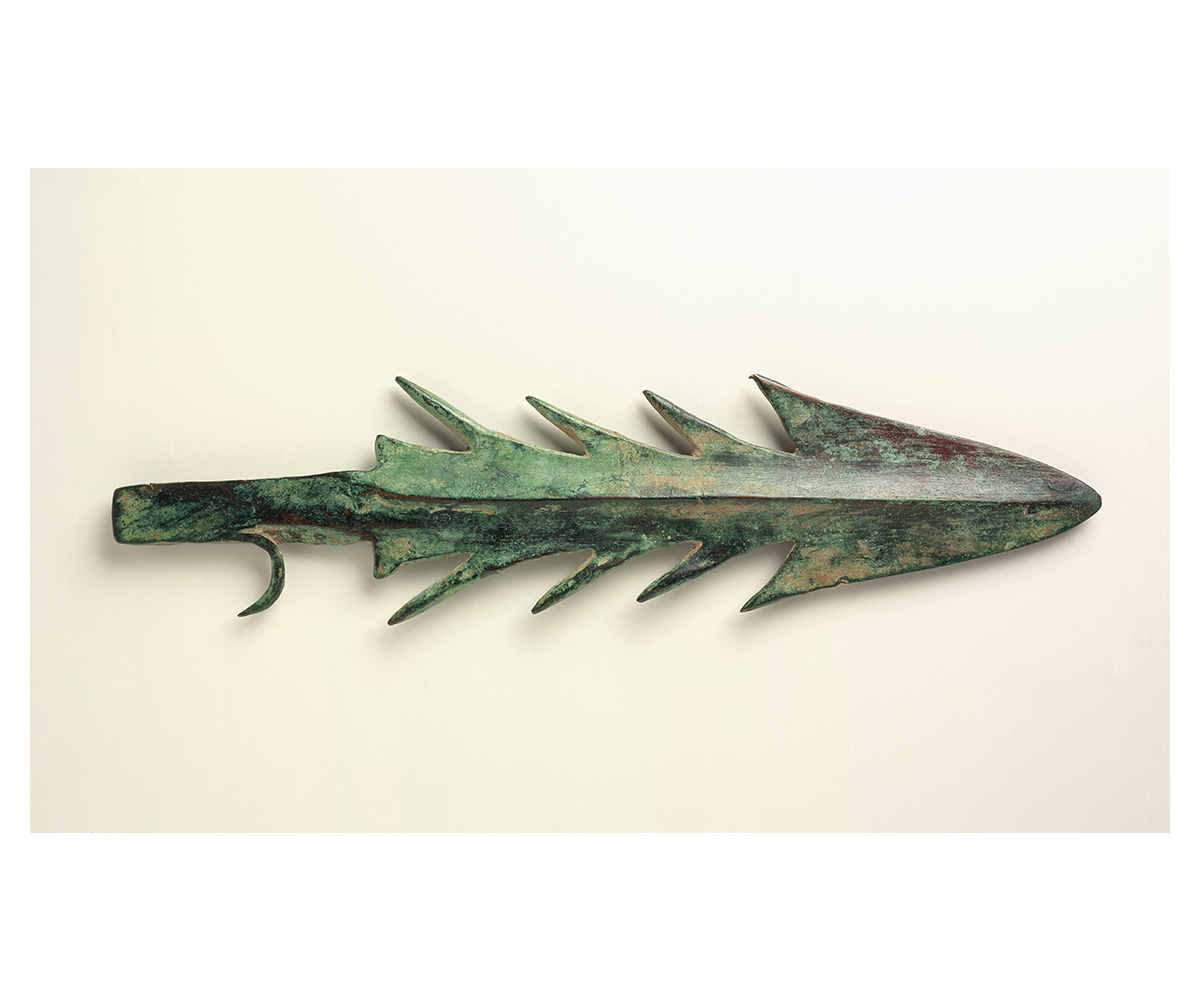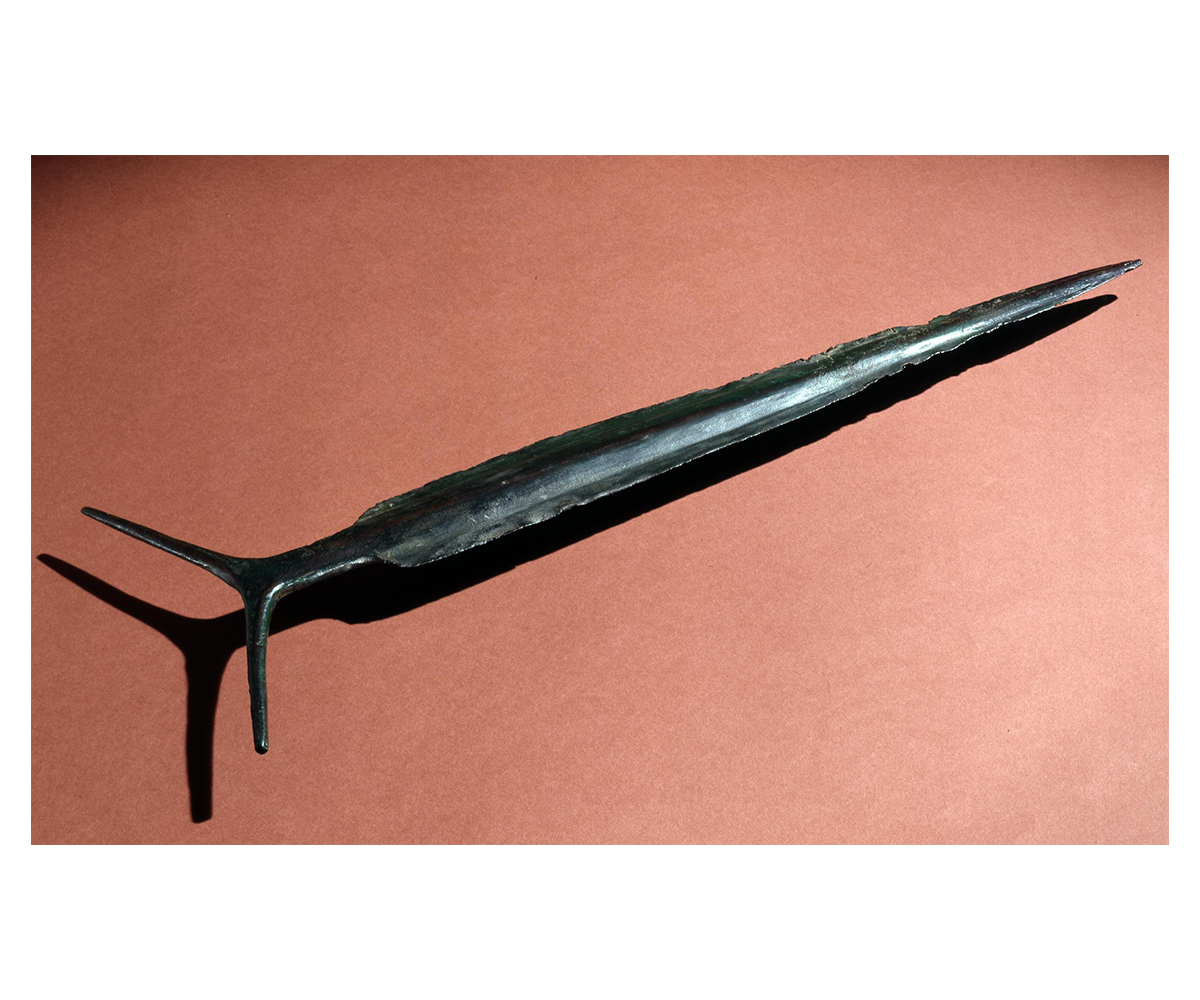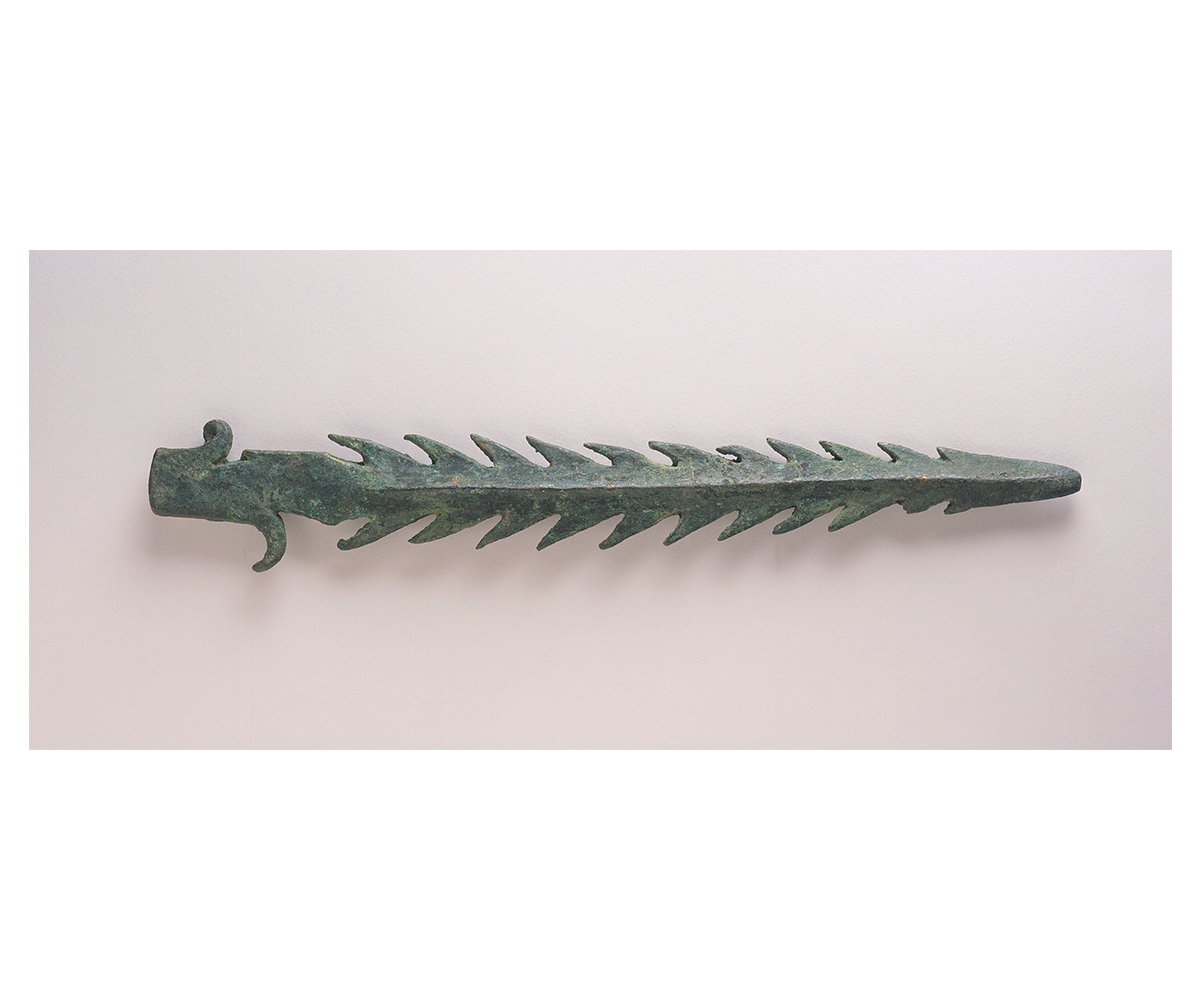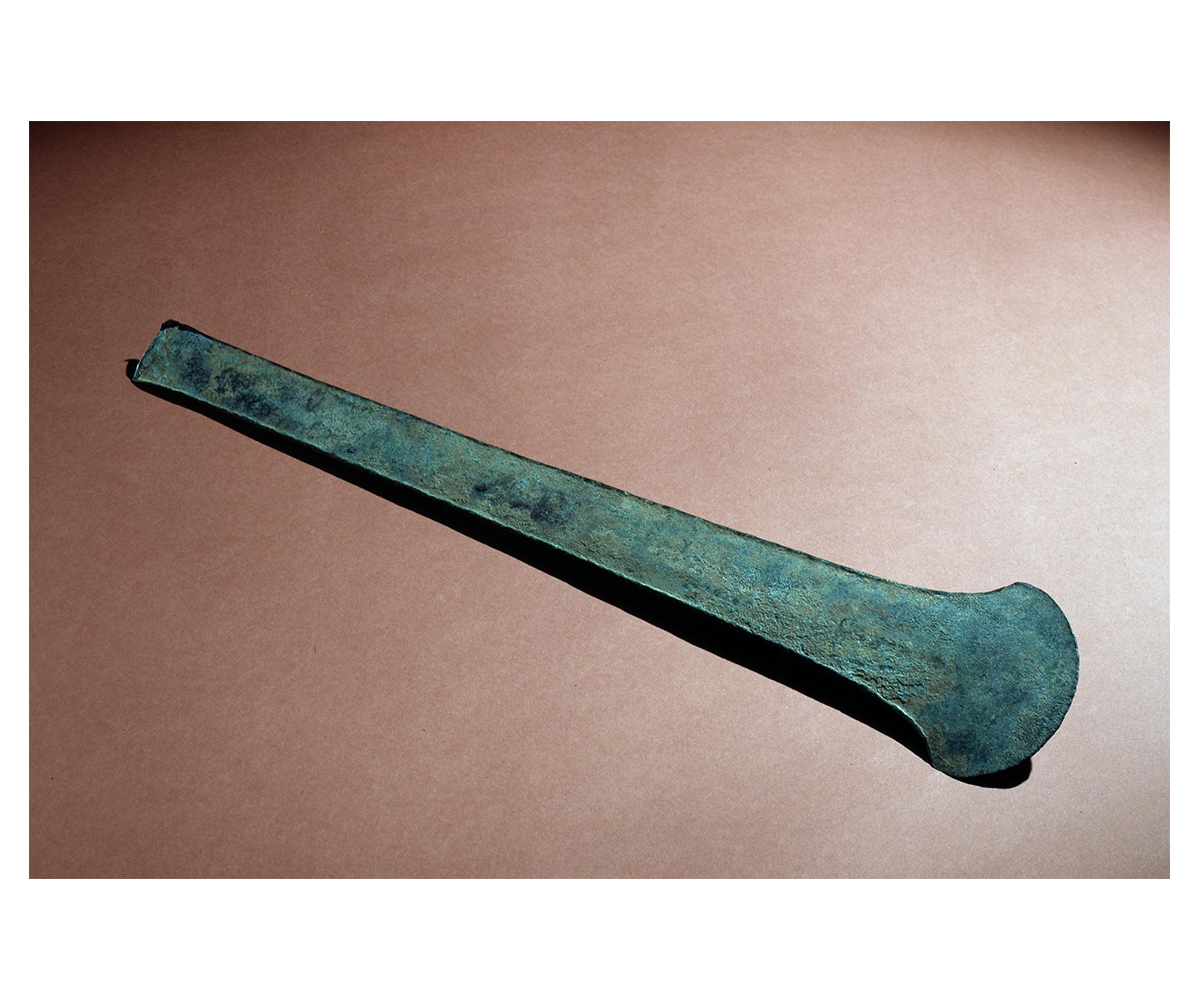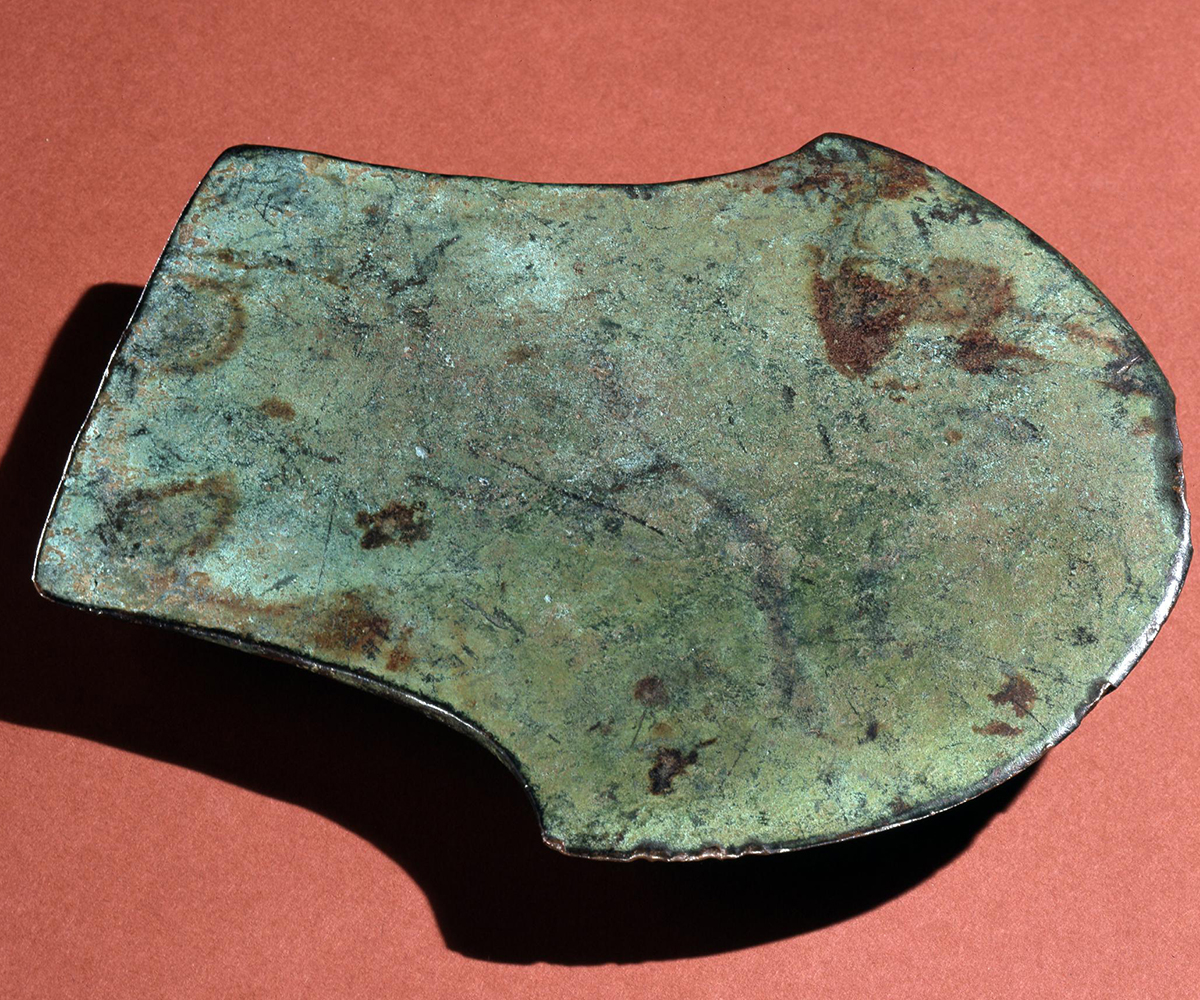ARTICLE
Copper Hoard Culture
The anthropomorphic figures are considered the most significant artefacts of Copper Hoard Culture. The objects vary between 25 and 45 cm in length and 30 to 44 cm in breadth, with some weighing up to 5 kg. While there is a diversity of form and size among the figures, most figures featured a head, two arms curved inwards and two outstretched legs. The largest hoard of such figures, numbered thirty-one, was found in Madarpur, Uttar Pradesh, where they were discovered stacked in situ. The purpose of these figures is debated. Some scholars have suggested that they may have been hunting implements, complementing hoard objects such as harpoons and swords. However, the weight of the figures as well as their unstandardised form is likely to have made them inefficient for hunting. Alternately, other scholars suggest a ritual or religious purpose for these figures, citing similarly shaped objects currently used in northern India in the worship of the Hindu god Shani. A similarly dedicatory or ritualistic function has been ascribed to other Copper Hoard objects, such as harpoons and axes, based on their size, use-wear and utility.
The dating of Copper Hoard objects and the identity of the people who made them are also widely debated. Most of the discovered hoard objects were found without stratigraphic contexts, making it difficult to date them. At the Saipai site in Uttar Pradesh, copper implements were found at the Ochre Coloured Pottery Culture level, but there is little other stratigraphic evidence to suggest how the two cultures are linked. Several copper implements, including antennae swords and copper sheets, have been found during excavations at the burial site of Sinauli in Uttar Pradesh, which is dated to between 2200 and 1800 BCE. Archeologists conducting the excavations have linked the Sinauli site to the Ochre Coloured Pottery Culture and the Copper Hoard Culture, suggesting a commonality between the two cultures. However, the Copper Hoard Culture is also believed to be contemporary with the Ochre Coloured Pottery Culture, although they may not be culturally linked.
The makers of the artefacts are believed to be either Indo-Aryan migrants or people of the Indus Valley Civilisation who may have migrated eastwards during the Late Harappan Phase. Another theory suggests that the artefacts were made by Proto-Australoid peoples of the eastern region of the Upper Gangetic Valley. The valley was known as a copper manufacturing area between the third and second millennia BCE, but it is unclear if the Copper Hoard Culture was an associated culture or an independent centre.
Bibliography
Agrawal, D. P. “The Copper Hoards Problem: A Technological Angle.” Asian Perspectives 12 (1969): 113–19. http://www.jstor.org/stable/42929067.
Deva, Krishna. “Problem of the Ochre Coloured Pottery.” In Potteries in Ancient India, edited by D. B. Sinha, 75–82. Patna: Patna University, 1969.
Handa, Devendra. “Harappans, Ochre Ware and the Copper Hoards.” East and West 18, no. 1/2 (1968): 147–50. http://www.jstor.org/stable/29755216.
Mallory, J. P., and D. Q. Adams, eds. Encyclopedia of Indo-European Culture. London: Fitzroy Dearborn Publishers, 1997.
Nair, Deepak K. “The Ochre Coloured Pottery: Reconsidering Issues and Problems.” In Proceedings of the Indian History Congress, 73: 1161–71, 2012. http://www.jstor.org/stable/44156317.
Parpola, Asko. “Royal “Chariot” Burials of Sanauli Near Delhi and Archaeological Correlates of Prehistoric Indo-Iranian Languages.” Studia Orientalia Electronica 8, no. 1 (2020): 175–98. https://doi.org/10.23993/store.98032.
Singh, Upinder. A History of Ancient and Early Medieval India: From the Stone Age to the 12th Century. New Delhi: Pearson, 2016.
Subramnian, T. S. “Royal Burial in Sinauli.” Frontline, September 12, 2018. https://frontline.thehindu.com/arts-and-culture/heritage/article24923229.ece.
Yule, Paul. “The Copper Hoards of Northern India.” Expedition Magazine, 1997. https://www.penn.museum/sites/expedition/the-copper-hoards-of-northern-india/.





